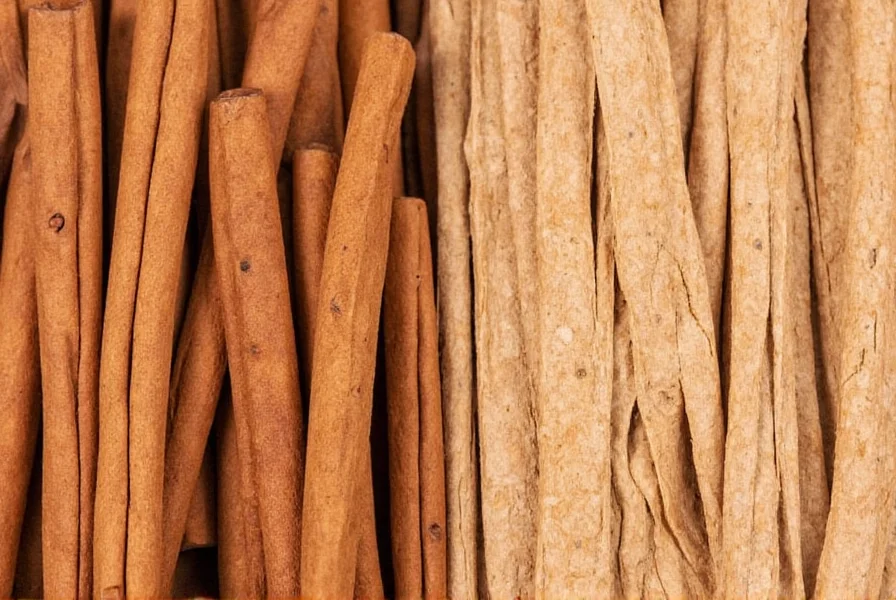When shopping for cinnamon, you've probably noticed two distinct types with different prices and appearances. Understanding which cinnamon is best requires examining both health implications and culinary applications. This comprehensive guide breaks down the key differences between cinnamon varieties to help you make informed choices based on scientific evidence and practical usage.
Understanding Cinnamon Varieties
Cinnamon isn't a single spice but rather comes from several related tree species. The two primary types available globally are Ceylon cinnamon (Cinnamomum verum) and Cassia cinnamon (Cinnamomum cassia), with Cassia representing about 90% of cinnamon sold in the United States. Less common varieties include Saigon and Korintje cinnamon, which are actually subtypes of Cassia.

Key Differences Between Cinnamon Types
The most significant differences between cinnamon varieties affect both health considerations and culinary applications. Let's examine these critical distinctions:
| Characteristic | Ceylon Cinnamon | Cassia Cinnamon |
|---|---|---|
| Origin | Sri Lanka, India, Madagascar | China, Indonesia, Vietnam |
| Appearance | Multiple thin, delicate layers forming a tight scroll | Thick, hard single layer with a rough texture |
| Flavor Profile | Milder, sweeter, more complex with citrus notes | Stronger, hotter, more intense 'classic' cinnamon flavor |
| Coumarin Content | Approximately 0.017g per kg | Approximately 6.97g per kg (over 400x higher) |
| Price | More expensive (typically 5-10x Cassia) | Affordable and widely available |
Health Considerations: Why Ceylon Is Safer for Regular Consumption
The most critical factor in determining which cinnamon is best relates to coumarin content. Coumarin, a naturally occurring compound, can cause liver damage when consumed in high quantities over time. Research shows Cassia cinnamon contains up to 400 times more coumarin than Ceylon cinnamon.
The European Food Safety Authority established a tolerable daily intake of 0.1mg of coumarin per kilogram of body weight. For a 150-pound person, this equals approximately 6.8mg daily. Just one teaspoon of Cassia cinnamon contains 5-12mg of coumarin, potentially exceeding safe limits with regular use.
Studies published in the Journal of Agricultural and Food Chemistry confirm Ceylon cinnamon's significantly lower coumarin levels make it the safer choice for daily consumption, especially for children, pregnant women, or those with liver conditions.
Culinary Applications: When Cassia Shines
Despite health considerations, Cassia cinnamon remains popular in baking and cooking due to its stronger flavor profile. Professional chefs often prefer Cassia for:
- Classic American baked goods like cinnamon rolls and apple pie
- Spice blends requiring intense cinnamon flavor
- Commercial food production where consistent strong flavor is needed
- Traditional recipes from Asian cuisines where Cassia is authentic
Ceylon cinnamon works better in more delicate applications:
- Desserts where subtle spice notes are preferred
- Beverages like chai tea where complex flavor shines
- Mediterranean and Latin American recipes calling for 'true cinnamon'
- Daily use in smoothies or health-focused recipes

How to Identify Authentic Ceylon Cinnamon
Many products labeled simply as 'cinnamon' actually contain Cassia. To ensure you're getting genuine Ceylon cinnamon:
- Examine the physical structure: Ceylon forms multiple thin layers like a cigar, while Cassia is a single thick, hard scroll
- Check the label for scientific name: Cinnamomum verum indicates Ceylon
- Look for 'true cinnamon' or 'Ceylon cinnamon' specifically mentioned
- Consider the price point: Genuine Ceylon is significantly more expensive
- Observe the color: Ceylon has a lighter tan color compared to Cassia's reddish-brown
Practical Recommendations for Consumers
Based on extensive research into which cinnamon is best for various applications, here are evidence-based recommendations:
- For daily health supplementation: Choose Ceylon cinnamon and limit to 1/2 teaspoon daily
- For occasional baking: Cassia works well and provides the familiar strong flavor
- For children's recipes: Always use Ceylon due to lower coumarin content
- For long-term storage: Both types last 1-2 years when stored in airtight containers away from light
- For maximum freshness: Buy whole cinnamon sticks and grind as needed
Remember that the question of which cinnamon is best doesn't have a single answer—it depends on your specific needs. Understanding the differences between cinnamon types empowers you to make informed choices that balance flavor preferences with health considerations.
Frequently Asked Questions
Is Ceylon cinnamon worth the higher price?
Yes, for regular consumption, Ceylon cinnamon's significantly lower coumarin content makes it worth the higher price, especially for daily use or for children. The price difference becomes less relevant when considering the small quantities typically used in recipes.
How much Cassia cinnamon is safe to consume?
For most adults, limiting Cassia cinnamon to 1 teaspoon (approximately 2-3 grams) no more than 2-3 times per week keeps coumarin intake within safe limits. Those with liver conditions should avoid Cassia entirely and use Ceylon instead.
Can I substitute Ceylon for Cassia in recipes?
Yes, but you may need to use 25-50% more Ceylon cinnamon to achieve similar flavor intensity. For delicate recipes, Ceylon works perfectly as a 1:1 substitute. In baking recipes calling for strong cinnamon flavor, consider adding a pinch of allspice or nutmeg alongside Ceylon to enhance the spice profile.
Does cinnamon type affect blood sugar benefits?
Research shows both Ceylon and Cassia cinnamon offer blood sugar regulation benefits, but Ceylon provides these benefits without the coumarin risk. A 2020 review in Nutrition Research concluded that both types demonstrate similar glucose metabolism effects at appropriate consumption levels.










 浙公网安备
33010002000092号
浙公网安备
33010002000092号 浙B2-20120091-4
浙B2-20120091-4